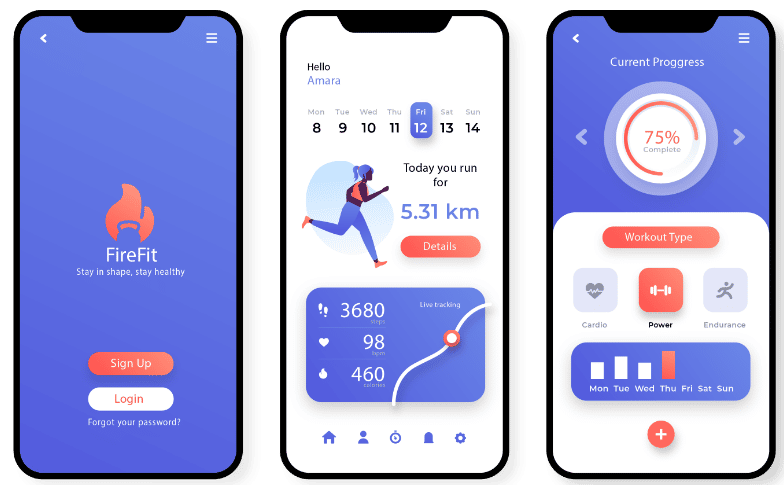Do PWAs lead to better SEO results?
Want to create a PWA instead of a native app? But what about a Progressive Web App with search engine optimization (SEO)? There is some uncertainty as to how far PWAs benefit from SEO or whether they even achieve better SEO results than normal websites. How Progressive Web Apps and SEO are related to each other or if they are completely independent from each other, we will have a look at this blog article.
SEO? What is that again?
SEO (Search Engine Optimization) means measures that enable you to optimize the ranking of websites or progressive web apps in the organic search results of search engines. The goal is to make relevant content available to your customers or to prepare your content in such a way that your customers will find exactly what they are looking for. The search terms of your customers should therefore be linked with relevant pages that cause a good ranking in the search engines. Furthermore, your website or PWA must be technically structured in such a way that it can also be found and captured by search engines in order to achieve a possible ranking position.
Progressive Web Apps and SEO – how are they related?
Progressive Web Apps and SEO – how does it work? Well, just like normal websites, they don’t have the power to just push search engine optimization like that. Manual work is needed to achieve this. But before you’re completely discouraged, there are of course a few points why you should invest in a Progressive Web App.
First, you use the latest technology. PWAs and their features are forward-looking and allow you to differentiate yourself from your competitors. These include, for example, the use of offline mode, that they are always up-to-date and have much faster load times than normal websites and native apps. They are – if you like to put it that way – the better websites. They follow the Mobile First idea (after all, they were primarily designed for the mobile browser) and motivate your customers to more interaction, e.g. placing them on the home screen via web push banners. These aspects also have a positive effect on user behaviour. Your customers will – if they are looking for something – and find you in the organic search results, associate this with their last visit to you and will be animated to drop by again. Returning visitors will encourage good traffic from your PWA. Traffic refers to the number of visitors to your Progressive Web App during a certain period of time. With analysis tools like Google Analytics you can directly see how many users have visited your PWA.
As soon as they have placed your PWA on their smartphone’s home screen, you can continue to expand your customer relationship, e.g. by sending individual offers via push notification. This has nothing to do with the organic search in the search engines, but to get customers and to bind them to you is of course your goal. Right from the start, try to expand your customer relationship and generate more traffic – all with a Progressive Web App that is both technically and content-wise good. Another point is that financially you have less effort to create your own app. Unlike native app creation, Progressive Web Apps eliminates the cost of a developer account for both Apple and Google stores.
So what can you do?
When technically implementing your PWA, you should pay attention to some important details so that Google and other search engines can capture them. First of all, a PWA is developed using the JavaScript programming language.
- Make sure that the contents of your PWA can be searched by search engine programs (Google’s Googlebot)
- Use Mobile First Responsive Design. First of all, users use their smartphone to find something. Therefore you should build your PWA according to this scheme. This is also rated positively by Google, because Google focuses on Mobile First
- Progressive Web Apps work with the HTTPS certificate, so they are encrypted with it. Therefore, all URLs of your PWA should also have the following label
- Use Progressive Enhancement for your PWA. This ensures that the Progressive Web App can also be used with other – not so modern – mobile browsers
- In the Google Search Console, you have a tool called Fetch as Google available. With this tool you can check in advance if and how the PWA URL is read and rendered by Googlebot
- Measure how fast your PWA really is. The page speed factor is also considered by Google for the ranking. For this you can use tools like Lighthouse or WebPageTest.
Progressive Web Apps and SEO: our conclusion
Let us summarise the points we have raised: Progressive Web Apps are especially good for SEO on one point: to create the best possible web experience for your customers. But you have to do something about it – just like you did before with a normal website. If you stick to the best and newest web technologies and procedures, you will succeed and you can quickly convert your organic traffic in the search engines into a strong customer relationship or customer loyalty. You can use chat and push notifications, which can be easily sent via your PWA. So you can indirectly improve your SEO with certain measures if you decide to use a PWA.
Our App Maker for your Progressive Web App
With our app maker you can easily create your own Progressive Web App – as well as create your app online – without any programming knowledge. We are happy to support you.


